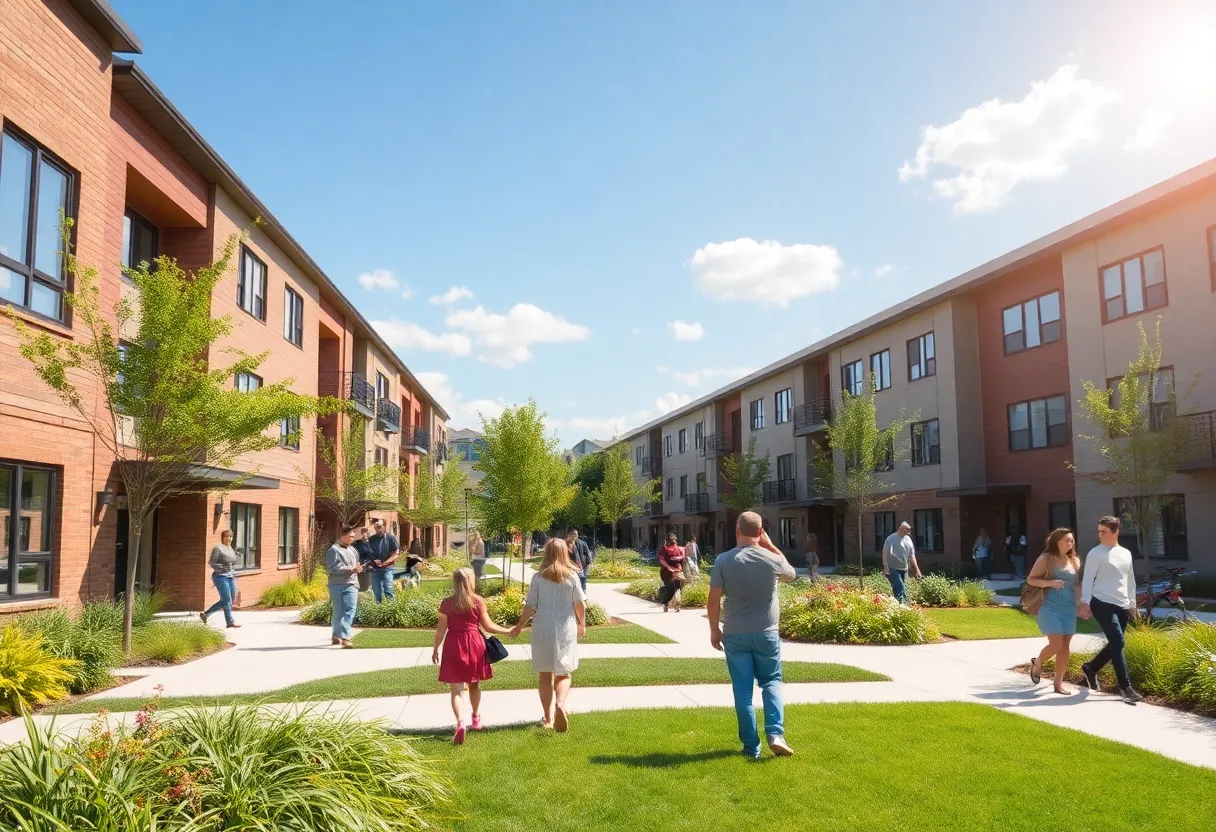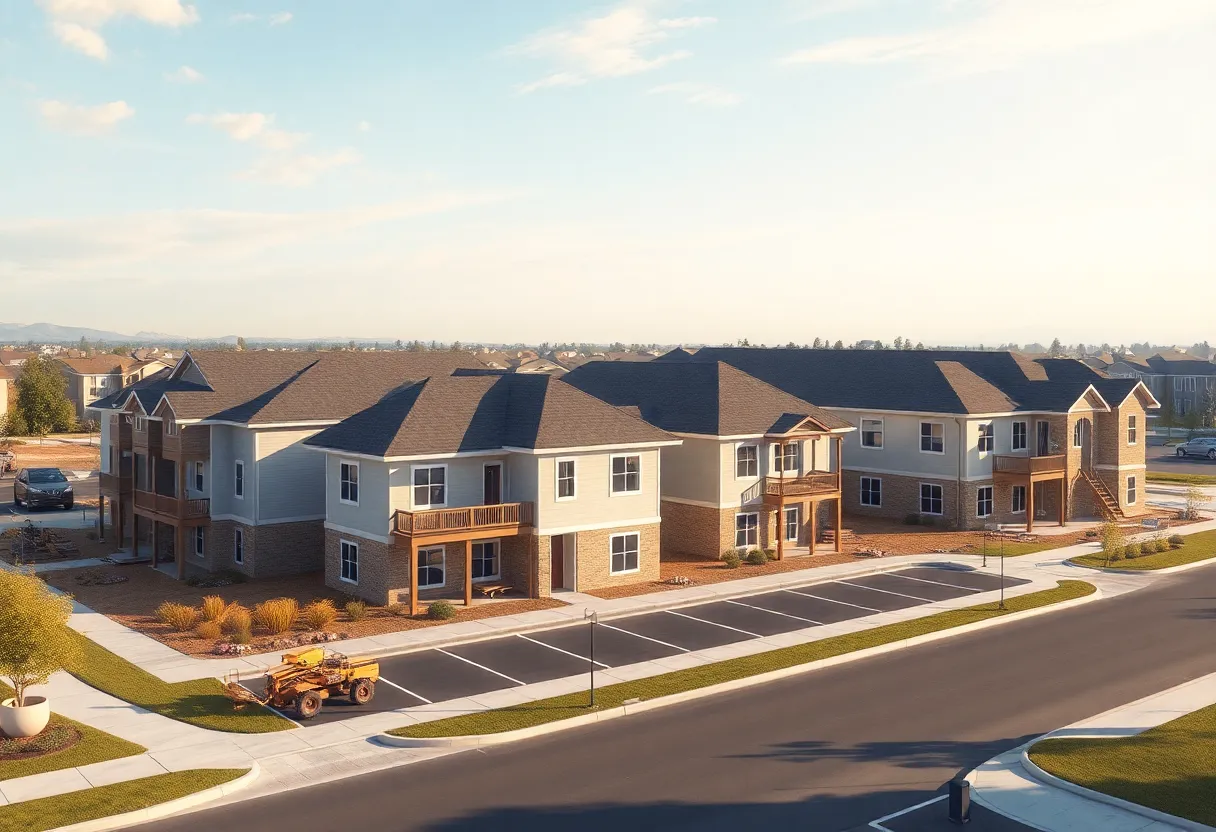California, August 12, 2025
News Summary
California is set to receive increased funding for affordable housing construction through changes to the Low-Income Housing Tax Credit program. This enhancement, part of a broader federal spending package, aims to boost the number of available tax credits and facilitate the construction of additional affordable rental units. While experts predict a significant rise in units built, challenges such as local zoning laws and land availability may impact actual outcomes. Advocates hope that this funding will address the ongoing housing crisis in the state as more than 44,000 units remain on hold due to funding shortages.
California Set to Receive Major Boost for Affordable Housing Through Federal Tax Credit Changes
California is poised to see a rapid increase in federal support for affordable housing construction after changes to the Low-Income Housing Tax Credit (LIHTC) program were included in a recent federal spending package known as the One Big Beautiful Bill. The package also cuts funding for multiple social services, but the LIHTC changes stand out for housing developers and state planners because they expand the available tax credits and loosen bond requirements tied to a widely used 4% tax credit.
What changed and why it matters
The spending package raises the number of LIHTCs available by 12% each year indefinitely. It also reduces the required share of tax-exempt bond financing tied to the 4% tax credit from 50% to 25%. Together, those adjustments make it easier for developers to finance affordable rental projects without relying as heavily on scarce state subsidy dollars.
Immediate impact and scale
Experts and housing analysts estimate the federal changes could translate into the construction of as many as 20,000 additional affordable rental units per year in California if the new credits are fully used and other obstacles are managed. More conservative estimates, accounting for land limits, local approvals, construction costs and financing gaps, put the realistic near-term increase closer to 10,000 new homes per year.
The shift arrives while more than 44,000 affordable housing units are on hold statewide because projects are waiting for critical funding. State officials overseeing the LIHTC process have already updated application rules to match the federal changes, a move designed to speed approvals and get projects into construction more quickly.
State context and needs
California remains deep in a housing crisis that has been worsened by recent wildfires around the Los Angeles region and ongoing affordability pressures statewide. A recent industry pipeline report for 2025 found that advancing planned projects will still require roughly $1.79 billion in state subsidies plus about $574 million in state tax credits. Those gaps mean federal LIHTC growth will help, but will not by itself solve the financing shortfalls that keep many projects stalled.
Policy and political background
The LIHTC increases have been a long-standing goal of affordable housing advocates and have drawn bipartisan support at different points. At the same time, the broader federal spending bill includes sharp cuts to other social programs, creating trade-offs in the overall budget picture that state leaders and local governments must weigh.
Operational changes at the state level
The state committee that allocates LIHTC awards has revised its application and scoring procedures to reflect the new federal eligibility rules and the changed bond threshold for the 4% credit. Those adjustments are intended to make it easier for projects to secure federal tax credit allocations faster, and to prioritize projects that can make the best use of the increased credits.
Limits and remaining challenges
- Land and approvals: Even with more credits, projects still need parcels, entitlements and local approvals that can delay or block construction.
- Rising costs: Construction and material costs remain high, which reduces how much housing can be built per dollar of subsidy.
- State funding gaps: State subsidies and tax credit programs continue to be necessary to close financing gaps for many projects.
- Competing needs: Recovery and fire-response spending in wildfire-affected areas add pressure on limited public resources.
Bottom line
The LIHTC changes in the federal package are one of the largest federal moves in recent years to expand the raw volume of affordable housing financing. For California, the shift could unlock thousands of new affordable units each year, speed up projects now stalled, and ease some pressure on local housing markets. However, state subsidies, site availability, local approvals and construction costs will still shape how many homes actually get built and how quickly.
Frequently Asked Questions
Q: What is the LIHTC change in the federal bill?
A: The federal bill increases the number of Low-Income Housing Tax Credits by 12% per year and lowers the tax-exempt bond requirement for the 4% credit from 50% to 25%.
Q: How many more homes could be built in California?
A: Optimistic estimates suggest up to 20,000 additional affordable rental units per year, with more conservative forecasts around 10,000 per year due to practical constraints.
Q: Will this solve California’s housing shortage?
A: No single change will solve the shortage. The LIHTC expansion is a large and helpful step, but state subsidies, local approvals, land availability and construction costs remain significant barriers.
Q: How many projects are on hold now?
A: Over 44,000 affordable housing units statewide are reported to be on hold pending critical funding.
Q: What state-level funding is still needed?
A: The 2025 pipeline analysis estimates the need for about $1.79 billion in state subsidies and $574 million in state tax credits to move many projects forward.
Quick reference chart: Key features and expected effects
| Feature | Change | Estimated Effect in California |
|---|---|---|
| LIHTC supply | +12% per year (indefinite) | Potential to support an additional 10,000–20,000 units/year |
| 4% credit bond requirement | Reduced from 50% to 25% | Easier access to 4% credits, lower reliance on tax-exempt bonds |
| Projects on hold | Current backlog | 44,000+ units awaiting funds |
| State subsidy needs (2025) | Estimated shortfall | $1.79 billion in subsidies; $574 million in state tax credits |
Note: Numbers are estimates based on program changes and pipeline analyses. Actual outcomes will depend on project-level financing, local approvals, construction costs, and state policy choices.
Deeper Dive: News & Info About This Topic
Additional Resources
- MyMotherLode: Lawsuit Challenges California Affordable Housing Programs
- Wikipedia: Affordable Housing
- The Center Square: California Bill Proposes Affordable Housing Changes
- Encyclopedia Britannica: Housing
- LA Magazine: CA Senate Passes Bill for Low-Income Housing
- Google Search: Affordable Housing California
- KFOX: California Bill for Fire-Ravaged Lots to Affordable Housing
- Housing Finance: Stalled Affordable Housing Units in California





